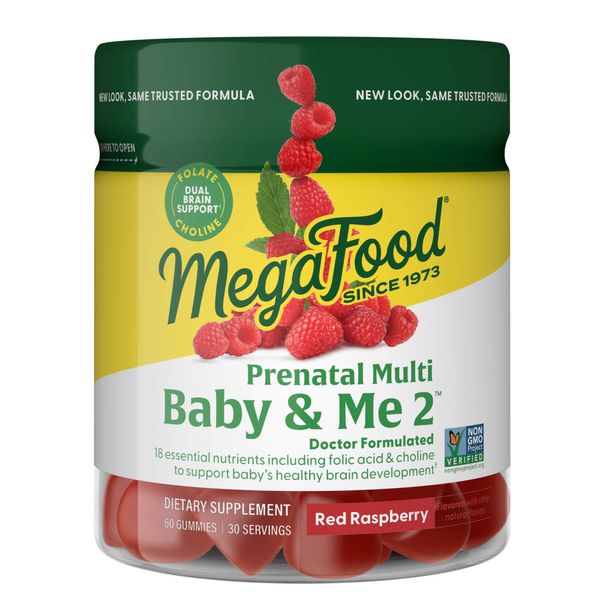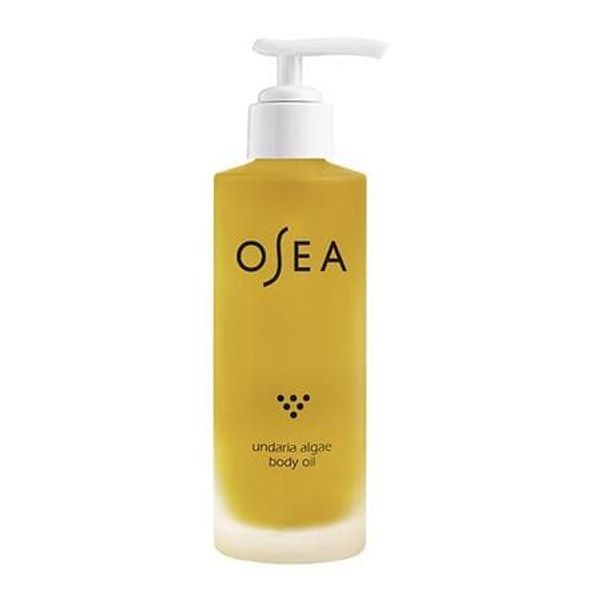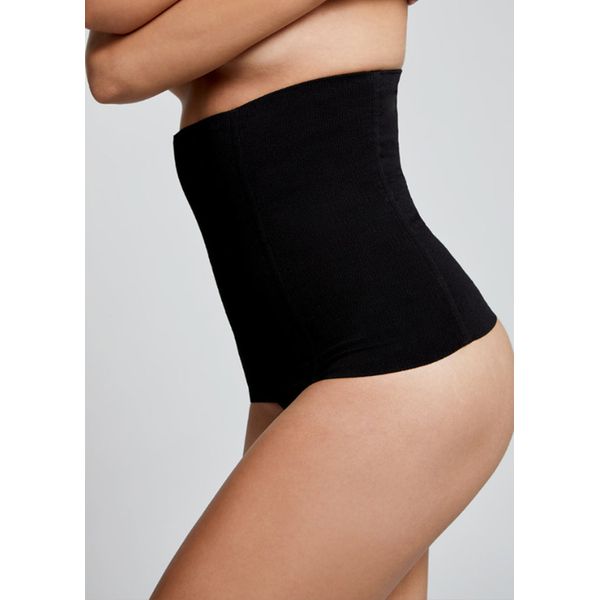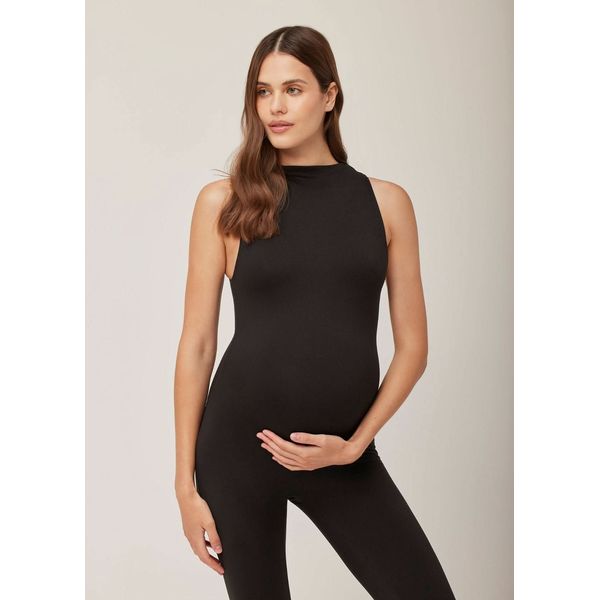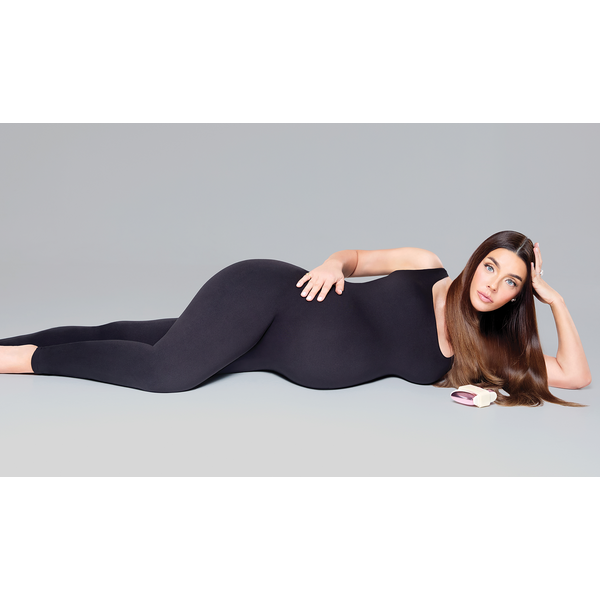Why Pregnancy-Safe Skincare Matters And How to Build Your Low-Toxic Routine
Discover why pregnancy-safe skincare is essential and how to build a complete low-toxic routine. Learn which ingredients to avoid, safe alternatives and the best low-toxic products for expectant mothers.
Pregnancy transforms your body in beautiful ways but it also makes your skin more vulnerable than ever before. If you’re expecting, you’ve probably wondered: Is my skincare routine safe for my baby? The short answer is: it depends.
Many conventional beauty products contain toxic ingredients that can cross the placental barrier and potentially affect your baby’s development. The good news? You don’t have to choose between glowing skin and your baby’s safety. Building a low-toxic pregnancy skincare routine is easier than you think and it actually improve both your skin health and your peace of mind during these precious nine months.
In comprehensive guide, you will discover exactly why pregnancy-safe skincare matters, which ingredients to avoid at all costs and how to create a complete low-toxic routine that keeps both you and your baby thriving.
WHY PREGNANCY-SAFE SKINCARE MATTERS: THE SCIENCE BEHIND LOW-TOXIC BEAUTY
YOUR SKIN ABSORBS EVERYTHING INCLUDING TOXINS
Here is what most people don’t realise: your skin isn’t just a barrier, it’s your body’s largest organ and it absorbs up to 60% of what you apply to it. During pregnancy, those absorbed ingredients enter your bloodstream and can cross the placental barrier to reach your developing baby.
Research shows that certain chemicals commonly found in conventional skincare products have been detected in umbilical cord blood, amniotic fluid and even breast milk. These include: Phthalates (found in fragranced products), Parabens (preservatives in lotions and creams). Formaldehyde-releasing preservatives, Chemical sunscreen ingredients (like oxybenzone) and Synthetic musks and fragrances.
While the long-term effects are still being studied, why take risk when safe, effective alternatives exist?
HORMONAL CHANGE MAKE YOUR SKIN MORE REACTIV
Pregnancy hormones don’t just cause morning sickness and food cravings, they dramatically affect your skin. Increased estrogen and progesterone levels can:
- Trigger melasma (dark patches on the face)
- Cause sudden sensitivity to products you’ve used for years
- Lead to pregnancy acne or rosacea flare-ups
- Increase oil production
- Make your skin barrier more permeable
The heightened sensitivity means toxic ingredients can penetrate deeper and cause more irritation during pregnancy. Your skin literally becomes more vulnerable to chemical assault.
COMMON TOXIC INGREDIENTS THAT CROSS THE PLACENTAL BARRIER
Not all skincare ingredients are created equal. Some are particularly concerning during pregnancy because they’ve proven to cross placental barrier:
Retinoids (Vitamins A derivatives): High doses of vitamin A derivatives like retinol, tretinoin and isotretinoin have been linked to birth defects. While topical retinol uses lower concentrations, most dermatologists recommend avoiding it entirely during pregnancy.
High-dose Salicylic Acid: Oral salicylates have been associated with pregnancy complications. While low-dose topical salicylic acid (under 2%) is generally considered safe, many expecting mothers prefer to avoid it completely.
Chemical Sunscreens: Ingredients like oxybenzone and avobenzone are hormone disruptors that can enter your bloodstream within minutes of application.
Essential oils:While natural, certain essential oils like rosemary, sage and clary sage can trigger uterine contractions and should be avoided especially in the first trimester.
Hydroquinone: This skin lightening ingredient has a high absorption rate (35-45%) and should be completely avoided during pregnancy.
THE LONG-TERM IMPACT ON YOUR BABY’S HEALTH
Emerging research suggests that prenatal exposure to certain chemicals may influence:
- Hormone development and endocrine function
- Neurological development and cognitive function
- Birth weight and gestational age
- Future risk of allergies and sensitivies
- Reproductive health in adulthood
While more research is needed, the precautionary principle applies: when in doubt, choose low-toxic alternatives that have been used safely for generations.
HOW TO BUILD YOUR COMPLETE LOW-TOXIC PREGNANCY SKINCARE ROUTINE
Now that you understand why pregnancy-safe skincare matters, let’s dive into how to create a routine that’s both effective and safe for you and your baby.
STEP 1: AUDIT YOUR CURRENT PRODUCTS
Before you can build a low-toxic routine, you need to know what you’re currently using. Here’s how to audit your skincare shelf:
Read Every Label: Look for these red-flag ingredients to eliminate:
- Retinol, retinoids, tretinoin(all forms of vitamin A)
- Salicylic acid over 2%
- Hydroquinone
- Chemical Sunscreens
- Parabens
- Phthalates
- Formaldehyde and formaldehyde-releasing preservatives
- Synthetic fragrances
Use a Verification App: Download apps like EWG’S Skin Deep or Think Dirty to scan your products’ barcodes snd see their safety ratings. Aim for products rated 1-3 (lowest toxicity) during pregnancy.
When it Doubt, Throw it Out: If a product doesn’t list all ingredients clearly or contains “fragrance” without specifying what’s in it, it’s time to replace it.
STEP 2: YOUR LOW-TOXIC MORNING SKINCARE ROUTINE
A simple, effective morning routine protects your skin throughout the day while keeping everything pregnancy-safe.
Morning Step 1: Gentle Cleanser
Choose a mild, non-foaming cleanser that won’t strip your skin’s natural oils. Look for ingredients like: Coconut-derived cleansers, Glycerin, Chamomile extract and Oat extract.
Avoid: Sulfates (SLS, SLES), synthetic fragrances and harsh foaming agents.
Morning Step 2: Hydrating Toner or Essence
A pregnancy-safe toner restores pH balance without alcohol or harsh acids. Look for: rose water, witch hazel (alcohol-free), Hyaluronic acid and Aloe vera.
Morning step 3: Vitamin C serum (Optional)
Vitamin C is pregnancy-safe and helps with hyperpigmentation, a common pregnancy concern. Choose: L-ascorbic acid(5-15%), Sodium ascorbyl phosphate (gentler option), No synthetic fragrances or parabens.
Morning step 4: Moisturiser
Hydration is crucial during pregnancy. Choose a clean moisturiser with: Shea butter, Ceramides, Squalane (plant-derived) and Niacinamide (safe for pregnancy and great for melasma)
Morning step 5: Mineral Sunscreen (ESSENTIAL)
This is the most important step. Mineral sunscreens with zinc oxide or titanium dioxide are pregnancy-safe and provide broad-spectrum protection without hormone disruption.
Pro Tip: Pregnancy makes you more susceptible to melasma (dark patches), so SPF 30+ daily is non-negotiable, even indoors.
STEP 3: YOUR LOW-TOXIC EVENING SKINCARE ROUTINE
Your evening routine focuses on repair and nourishment while you sleep.
Evening Step 1: Double Cleanse
Start with an oil-based cleanser to remove sunscreen and makeup, followed by your gentle water-based cleanser. Safe oils for pregnancy include: Jojoba oil, Sweet almond oil, Grapeseed oil and Sunflower oil.
Evening Step 2: Gentle Exfoliation (2-3x per week)
Skip harsh scrubs and acids. Instead, opt for: Lactic acid (AHA 5% or less), Fruit enzymes (papaya, pumpkin), Gentle konjac spnge and Low-percentage azelaic acid (pregnancy-safe)
Evening Step 3: Hydrating Serum
Layer hydration with pregnancy-safe ingredients: Hyaluronic acid (multiple molecular weights), Niacinamide (B3), Peptides (most are safe, check specific types) and Centella asiatica (cica)
Evening Step 4: Facial Oil or Rich Moisturiser
Seal in all that goodness with a nourishing final layer: Rosehip seed oil (safe alternative to retinol), Marula oil, Argan oil, Ceramide-rich night cream.
Evening Step 5: Eye Cream
The delicate eye area needs extra care: Caffeine (reduces puffiness), Hyaluronic acid, Vitamin K (helps with dark circles) and Peptides.
STEP 4: BODY CARE FOR PREGNANCY, THE LOW-TOXIC WAY
Your skincare routine shouldn’t stop at your face. Your belly, breasts and body need special attention during pregnancy.
Stretch Mark Prevention & Body Hydration
While genetics play a role in stretch marks, keeping skin deeply hydrated can help. One of my favorite pregnancy-safe body products is the OSEA Undaria Algae Body Oil-a luxurious, non-toxic oil that’s rich in omega fatty acid and absorbs beautifully without leaving you greasy.
The key to preventing stretch mark is consistency: apply body oil or butter twice daily to your belly breats, hips and thighs. Look for ingredients like:
- Organic plant oils (coconut, almond, jojoba)
- Shea butter
- Cocoa butter
- Algae extracts (like in OSEA products)
Maternity Support Wear
While not technically “skincare”, what you wear against your skin matters. Many conventional maternity clothes contain synthetic fabrics that can trap sweat and irritate sensitive pregnancy skin. I love pairing body oils with comfortable, breathable maternity wear like The Gia Maternity Unitard or The Lucy Maternity Unitard. These provide gentle support while allowing your skin to breathe which is essential when pregnancy hormones have you running hot.
Postpartum Support
Planning ahead for postpartum recovery? The Support Waist Trainer can help with abdominal support after delivery. Pair it with gentle body care to help your skin recover and regain elasticity.
STEP 5: INTERNAL SUPPORT: NOURISH SKIN FROM WITHIN
Low-toxic skincare isn’t just about what you put on your body, it’s also about what you put in it.
Prenatal Vitamins for Skin Health
A high quality prenatal vitamin supports not just your baby’s development, but also your skin, hair and nail health during pregnancy. I recommend Baby & Me 2™ Prenatal Multi Gummies. They’re gentle on sensitive stomachs and provide essential nutrients including:
- Folate (not synthetic folic acid)
- Biotin for healthy hair and nails
- Vitamin D3 for immune support and skin health
- Omega-3s for skin barrier function
- Iron to prevent anemia and dull skin
Hydration
Drink 8-10 glasses of water daily. Proper hydration:
Plumps skin from the inside out
Helps prevent stretch marks
Supports amniotic fluid levels
Reduces pregnancy-related swelling
Improves skin elasticity
Nutrition for glowing Pregnancy Skin
Focus on:
- Omega-3 fatty acids (wild-caught salmon, chia seeds, walnuts)
- Vitamin C (citrus, bell peppers, strawberries)
- Vitamin E (almonds, avocado, spinach)
- Zinc (pumpkin seeds, chickpeas, cashews)
- Collagen-building proteins(bone broth, grass-fed meat, legumes)
PREGNANCY SKIN CONCERNS: LOW-TOXIC SOLUTIONS THAT ACTUALLY WORK
MELASMA (PREGNANCY MASK)
The Problem: Dark patches on your face caused by hormonal changes and sun exposure.
Low-Toxic Solutions:
- Daily mineral sunscreen (SPF 30)
Vitamin C serum in the morning - Niacinamide (B3) to fade pigmentation
- Azelaic acid (safe for pregnancy)
- Wear a hat when outdoors
Avoid: Hydroquinone, high-dose vitamin A, chemical peels.
pregnancy acne
The Problem: Increased oil production and hormonal fluctuations cause breakouts.
Low-Toxic Solutions:
- Low-dose salicylic acid cleanser (under 2%)
- Tea Tree oil (diluted, spot treatment only)
- Niacinamide to regulate oil production
- Azelaic acid (anti-inflammatory and antibacterial)
- Clay masks (kaolin or bentonite)
Avoid: Oral acne medicationd, high-dose salicylic acid, retinoids
DRY, ITCHY SKIN
The Problem: Pregnancy hormones and stretching skin lead to intense dryness and itching.
Low-Toxic Solutions:
- Rich body oils applied to damp skin (like OSEA Undaria Algae Body Oil)
- Colloidal oatmeal baths
- Ceramide-rich moisturisers
- Humidifier in your bedroom
- Gentle, fragnance-free products
Avoid: Hot showers, harsh soaps, synthetic fragrances
sensitive, reactive skin
The Problem:Suddenly everything makes your skin red, itchy or irritated.
Low-Toxic Solutions:
- Simplify your routine (less or more)
- Patch test new products on your innerarm first
- Choose fragrance-free, hypoallergrnic products
- Centella asiatica (cica) for soothing
- Cold compresses for inflammation
Avoid: Essential oils, fragrances, exfoliants, long ingredient lists.
ingredients that are safe & effective during pregnancy
Wondering what you can use? Here’s your safe list:
Hydrators: Hyaluronic acid, Glycerin, Squalane, Ceramides
Antioxidants: Vitamin C (L-ascorbic acid), Vitamin E, Niacinamide (B3), Green Tea Extract
Gentle Exfoliants: Lactic acid (5% or less), Fruit enzymes (papaya, pumpkin), Azelaic Acid
Soothing Ingredients: Aloe Vera, Calendula, Chamomile, Colloidal oatmeal, Centella asiatica
Safe Oils: Jojoba, Rosehip seed, Argan, Sunflower, Sweet Almond
Sun Protection: Zinc oxide (mineral sunscreen), Titanium dioxide (mineral sunscreen)
YOUR COMPLETE LOW-TOXIC PREGNANCY SKINCARE SHOPPING LIST
Morning routine
- Gentle cleanser (fragrance-free, sulfate-free)
- Alcohol-free toner or hydrating essence
- Vitamin C serum
- Niacinamide moisturiser
- Mineral sunscreen SPF 30
EVENING ROUTINE
- Oil cleanser (first cleanse)
- Water-based cleanser (second cleanse)
- Gentle exfoliant (2-3x per week)
- Hyaluronic acid serum
- Facial oil or night cream
- Eye cream
BODY CARE
- Pregnancy-safe body oil (OSEA Undaria Algae Body Oil)
- Stretch mark butter or cream
- Gentle body wash
- Supportive maternity wear (shop maternity unitards)
Internal support
- Prenatal Vitamins (Baby & Me 2™ Prenatal Multi Gummies)
- Omega-3 supplement
- Probiotic (for gut health and skin)
COMMON PREGNANCY SKINCARE MISTAKES TO AVOID
Mistakes #1: Assuming “Natural” Means “Safe”
Not all natural ingredients are pregnancy-safe. Essential oils like rosemary, sage and clary sage should be avoided. Always research specific ingredients, even if they’re plant-based.
Mistakes #2: Over-Exfoliating
Pregnancy skin is more sensitive. Skip harsh scrubs and high percentage acids. Stick to gentle exfoliation 2-3 times per week maximum.
Mistakes #3: Skipping Sunscreen
Pregnancy hormones make you more prone to melasma. Mineral sunscreen is your best defense, wear it every single day.
Mistake #4: Using Too Many Products
More isn’t better during pregnancy. A simple routine with 5-7 high quality, low-toxic products is more effective than a 12-step routine filled with questionable ingredients.
Mistake #5: Not Reading Labels
“Pregnancy -safe” and “clean beauty” aren’t regulated terms. Always read the ingredient list yourself and verify safety.
Mistake #6: Forgetting Your Body
Don’t neglect the skin below your neck. Your belly, breasts and body need just as much low-toxic care as your face.
when to see a dermatologist
While most pregnancy skin changes are normal, see a healthcare provider if you experience:
- Severe sudden acne that doesn’t respond to gentle treatments
- Intense itching with no visible rash (could indicate cholestasis)
- Painful, red, swollen areas (possible infection)
- Rapid changing moles or skin lesions
- Persistent rashes or hives
Always consult your OB-GYN dermatologist before starting any new skincare treatments during pregnancy.
YOUR LOW-TOXIC PREGNANCY GLOW STARTS NOW
Building a pregnancy-safe, low-toxic skincare routine isn’t about deprivation, it’s about makine smarter choices that protect both you and your baby.By eliminating harmful ingredients and choosing clean, effective alternatives, you can achieve that coveted pregnancy glow while keeping your conscience clear.
Remember:
Simplify your routine with 5-7 high quality, pregnancy-safe products
Read every label and avoid toxic ingredients like retinoids and chemical sunscreens
Protect your skin with daily mineral SPF to prevent melasma
Nourish from within with prenatal vitamins and plenty of water
Support your body with clean body care and comfortable maternity wear
Ready to complete your low-toxic pregnancy routine? Explore our curated Pregnancy Edits Collection featuring everything from clean skincare to supportive maternity essentials-all carefully selected to keep you and your baby thriving.
Your baby deserves the best start and that begins with what youput on your skin. Start your low-toxic journey today.
PIN THIS POST | SHARE WITH AN EXPECTING FRIEND | SHOP PREGNANCY EDITS
Have questions about pregnancy-safe skincare? Drop them in the comments below! I read and respond to every single one.
Disclaimer: This blog post is for informational purposes only and does not constitute medical advice. Always consult your healthcare provider before making changes to your skincare routine during pregnancy.

